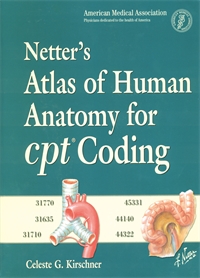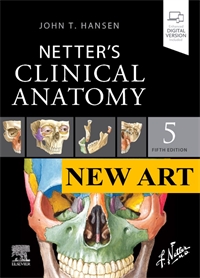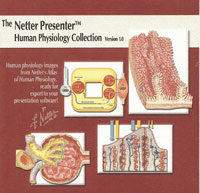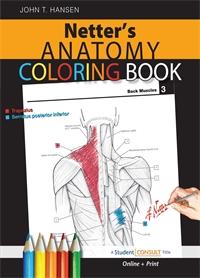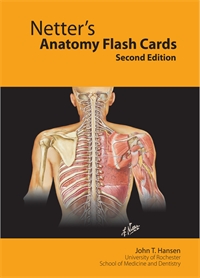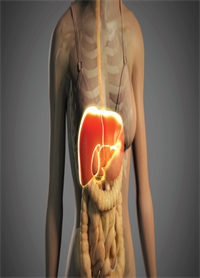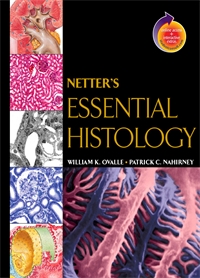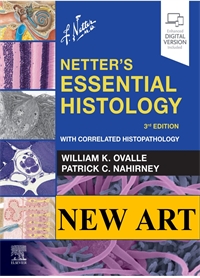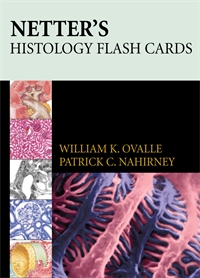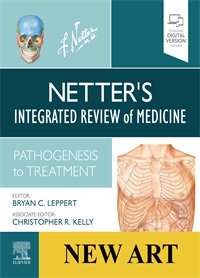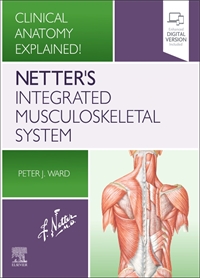Elsevier's Integrated Histology
Author: Alvin G. Telser, John K. Young, and Kate M. Baldwin
ISBN: 9780323033886
- Page 2: Section Planes Through Common Objects
- Page 3: A White Blood Cell (polymorphonuclear Leukocyte) From the Peripheral Circulation
- Page 6: Light and Electron Micrographs of Thyroid Follicles
- Page 8: Actin Filaments and Microtubules
- Page 12: Section of Scalp
- Page 13: Section of Scalp
- Page 14: Diagram Depicting the Current Understanding of the Disposition of Proteins and Lipids In the Plasma Membrane
- Page 16: Diagram of a Cell Illustrating Several Types of Endocytosis and Exocytosis
- Page 17: Hepatocyte Nuclei And Nuclei of Spermatogenic Cells
- Page 18: Diagram of a Typical Eukaryotic Nucleus
- Page 20: Diagram of a Typical Eukaryotic Mitochondrion
- Page 21: The Relationship of the Nuclear Envelope to the rER
- Page 25: Diagram of Lysosome Formation From the rER, Through the Golgi Apparatus
- Page 27: Diagram of Microtubules That Shows the Arrangement of Subunits In a Microtubule
- Page 30: Diagram of a Centriole
- Page 31: Light Micrograph of Liver
- Page 38: Illustration of the Range of Structures of the Human Body That Are Included In the Study of Histology
- Page 39: Small Arteriole and Venule From the Small Intestine and the Nonkeratinized Stratified Squamous Epithelium of the Esophagus
- Page 40: Section of Skin Showing Two Different Kinds of Loose Connective Tissue and Dense Irregular Connective Tissue
- Page 42: Smooth Muscle and Skeletal Muscle
- Page 43: Cardiac Muscle
- Page 44: Section of Brain and Spinal Cord
- Page 45: Sensory Ganglion and Small Nerve Bundle
- Page 47: Diagram of a Synapse
- Page 48: Micrograph of the Renal Cortex
- Page 51: Schematic Diagram of a Solid Organ With All Main Parts Labeled
- Page 51: Schematic Diagram of a Typical Hollow Organ
- Page 55: Frog Epidermis
- Page 56: H&E Stain From the Soft Palate
- Page 57: Section of the Epithelial Lining of the Vagina (100x) and Section of Skin That Is a Keratinized Stratified Squamous Epithelium (70x)
- Page 58: H&E Stained Section of Amnion (200x) And, H&E Stained Semi-thin (1.5 μm) Section of the Pancreas (700x)
- Page 59: A Region of the Submandibular Gland
- Page 59: H&E Section of the Pyloric Region of the Stomach (150x)
- Page 60: A Section of Epididymis and Urothelium
- Page 61: Glycocalyx and the Tips of Microvilli
- Page 64: Section of a Plastic-embedded Bronchus and Electron Micrograph of Several Cilia Cut In Cross-section
- Page 65: Diagram of a Cross-sectioned Axoneme
- Page 66: Diagram of a Junctional Complex
- Page 67: Diagrammatic Representation of a Typical Occluding Junction
- Page 68: Diagram of a Desmosome With Some of the Structural Components Labeled
- Page 70: Medium-power Electron Micrograph of Several Hemidesmosomes As Seen In the Epidermal-dermal Interface
- Page 70: Diagram of a Hemidesmosome
- Page 71: H&E Stained Section of a Small Serous Gland Within the Body of the Tongue
- Page 72: H&E Stained Section of a Small Mucous Gland Within the Body of the Soft Palate
- Page 73: Submandibular Gland (Mallory-Azan Stain)
- Page 74: The Four Secretion Mechanisms, A Set of Idealized Diagrams of the Different Architectural Patterns of Exocrine Glands, and Three Major Variations of the Patterns Shown In Part B
- Page 78: Light Micrograph of Mesenchyme Near the Spinal Cord of a Developing Pig Fetus and A Trichrome Stain of a Full-term Umbilical Cord
- Page 79: Six Different Kinds of Loose Connective Tissue
- Page 80: A Section of the Tips of Two Intestinal Villi From the Jejunum and A Section of Vagina Just Below the Epithelium
- Page 81: A Section of Skin Showing the Region Just Below the Epidermis and A Section of the Hypodermis
- Page 82: Examples of Dense Irregular Connective Tissue
- Page 86: Silver Stain of a Lymph Node and the Cortex of a Fetal Adrenal Gland
- Page 87: Section of Aorta (A) and Skin Showing the Epidermis and Dermis (B)
- Page 89: Diagram of Collagen Fiber Assembly
- Page 95: Diagram of Aggrecan and Schematic Diagrams of Fve Other Proteoglycans
- Page 96: A Composite of Two Light Micrographs of Fibroblasts In the Papillary Layer and the Reticular Layer of the Dermis of Skin
- Page 97: Electron Micrograph of a Fibroblast Sectioned Transversely
- Page 105: Diagram of an Actin Filament
- Page 105: A Myosin Subunit Is Seen at the Top of This Diagram
- Page 106: Whole Muscle
- Page 108: A Synaptic Ending As It Makes Contact With a Small Depression of a Myofiber In an Area Called a Synaptic Cleft and A Motor Unit at the Light Microscopic Level
- Page 110: Light Micrograph of a Muscle Spindle and Diagram of a Muscle Spindle As It Would Be Seen In an Electron Micrograph
- Page 111: Sections of Skeletal Muscle
- Page 112: H&E Stain of Myofibers From the Tongue and Portions of Myofibers Stained With Milligan’s Trichrome Stain
- Page 113: In Addition to the A Bands, I Bands, and Z Lines, the H Bands and M Line Are Visible. B, The Numerous Dark Dots In the I Band and Next to the M Line Are Glycogen Particles
- Page 114: Diagram of a Sarcomere
- Page 114: Three-dimensional Diagram of a Single Myofiber
- Page 116: Cardiac Muscle
- Page 117: Diagram Showing the Centrally Placed Nucleus, Abundance of Mitochondria, End-to-end Structure of the Intercalated Disks, and Nonuniform Diameter and Shape of the Myofibril Bundles and Electron Micrograph of Cardiac Muscle
- Page 119: H&E Stain of Purkinje Fibers
- Page 120: H&E Stain of a Semi-thin Section of the Muscular Wall of a Monkey Oviduct and Milligan’s Trichrome Stain of the Muscular Wall of the Small Intestine
- Page 121: PAS-stained Section of the Muscular Wall of the Stomach
- Page 122: Major Ultrastructural Features of Smooth Muscle Fibers
- Page 123: Diagrammatic Representation of a Noncontracted and a Contracted Smooth Muscle Cell and High-magnification Section of a Small Bundle of Smooth Muscle Fibers From the Wall of the Stomac
- Page 124: Group of Contracted Smooth Muscle Cells
- Page 127: Diagram of an Aggrecan Molecule, Diagrammatic Representation an Aggrecan Molecule And, Diagram of the Matrix of Hyaline Cartilage
- Page 128: Hyaline Cartilage From the Trachea
- Page 129: Transverse Section Through One of the Tracheal Cartilages
- Page 130: Diagram of a Portion of Hyaline Cartilage and Section of Tracheal Cartilage
- Page 132: Two Different Sections of Fetal Hyaline Cartilage
- Page 133: Electron Micrograph of Chondrocytes
- Page 134: Micrographs of Elastic Cartilage From the Pinna of the Ear
- Page 135: Section of Monkey Ear Stained With Milligan’s Trichrome Stain
- Page 136: H&E Stain of a Fibrocartilaginous Joint and Hematoxylin-orange G Stain of the Fibrocartilaginous Joint at the Symphysis Pubis
- Page 137: Fetal Vertebra
- Page 138: Schematic Drawing of a Dry Femur That Has Been Sawed In Half Lengthwise
- Page 139: Thin Ground Section of Mature, Ossified, Cortical Bone and H&E Stain of Decalcified Section of Mature Cortical Bone
- Page 141: H&E Stain of Decalcified Section of Developing Bone
- Page 143: H&E Stain of a Decalcified Section of Cortical Bone From a Growing Animal
- Page 144: Schematic Diagram of Intramembranous Bone Formation
- Page 145: Woven Bone Spicules
- Page 146: Two Regions of Developing Intramembranous Bone
- Page 147: Diagram Showing the Ultrastructural Organization of Bone Cells and Matrix
- Page 148: Bone
- Page 149: Epiphyseal Plate
- Page 151: Micrographs of an Epiphyseal Plate
- Page 152: Schematic of the Macroscopic Changes That Occur During Growth and Elongation of a Long Bone
- Page 153: Diagram of the Appearance of Adult Compact Bone
- Page 153: Diagrammatic Representation of Three Generations of Haversian Systems In a Small Area of Compact Bone
- Page 154: Intramembranous Bone
- Page 158: Diagram of a Neuron Showing the Perikaryon, Tapering Dendritic Processes, and a Single, Thin Axon
- Page 159: Conventionally Stained Neural Tissue Showing Basophilic Nissl Substance In a Neuronal Perikaryon
- Page 159: Dopaminergic Neuron Stained for the Enzyme Tyrosine Hydroxylase (TH) (brown) Using an Immunocytochemical Method
- Page 160: Diagram of a Synaptic Bouton
- Page 161: Dopaminergic Neuron of the Zona Incerta of the Hypothalamus
- Page 161: Purkinje Cell Neurons of the Cerebellar Cortex
- Page 162: Pyramidal Neuron of the Cerebral Cortex
- Page 163: Diagram of a Neuron That Controls Salivation
- Page 164: An Astrocyte
- Page 165: An Oligodendrocyte
- Page 166: The Neural Tube of an Embryo With Adjacent, Developing Dorsal Root Ganglia
- Page 167: Diagram of Spinal Cord
- Page 167: View of a Sensory Pseudounipolar Neuron Giving Off Its Bifurcating Axonal Process
- Page 169: Light Micrograph of a Cross-section Through a Peripheral Nerve
- Page 171: Sympathetic Ganglion
- Page 171: Diagram of Eye Development From the Optic Vesicle
- Page 173: Diagram of the Major Structures of the Adult Eye
- Page 173: Low-magnification View of the Anterior Portion of the Eye
- Page 174: View of the Cornea
- Page 175: High-magnification View of the Epithelium
- Page 176: High-magnification View of the Iris
- Page 177: View of the Iridocorneal Junction
- Page 178: View of the Margin of the Lens
- Page 179: Diagram of the Cell Types Found In the Retina
- Page 180: Micrograph of the Retina
- Page 182: Horizontal Cell In the Retina
- Page 184: Optic Papilla Region of the Eyeball
- Page 185: Micrograph of the Eyelid
- Page 186: Diagram of the Two Types Of Hair Cells Found In Maculae
- Page 187: Macula
- Page 188: Crista Ampullaris at the Base of a Semicircular Canal
- Page 188: Semicircular Canal In a Newborn Rat
- Page 189: Diagram of the Cochlea
- Page 190: Low-magnification View of the Cochlea
- Page 190: Higher Magnification View of the Cochlea
- Page 191: Diagram of Some of the Cell Types Found Within the Organ of Corti
- Page 193: Diagram of the Apical Portions of Sensory Hair Cells
- Page 194: View of the Vestibular Ganglion
- Page 194: Diagram of the Overall Anatomy of the Outer, Middle, and Inner Portions of the Ear
- Page 195: Diagram of the Middle Ear
- Page 198: Diagram of the Cardiovascular and Lymphatic Circulatory Systems
- Page 198: Diagram of the Heart
- Page 200: Section of the Left Ventricle and Left Atrium of a Monkey Heart Near the Mitral Valve and Diagram Shows the Trigona Fibrosa
- Page 202: Elastic Arteries
- Page 203: Neurovascular Bundle
- Page 204: Neurovascular Bundle
- Page 206: Companion Arteries and Veins of the Small Category
- Page 207: Whole-mount Preparation of the Pia Mater
- Page 208: Two Small Capillary Networks In Spread Preparations
- Page 209: A Pair of Small Companion Vessels Embedded In Adipose Tissue
- Page 210: Full-thickness Sections of Human Vena Cava
- Page 211: Full-thickness Sections of Human Vena Cava
- Page 212: Electron Micrographs of Continuous Capillaries
- Page 213: Electron Micrographs of Fenestrated Capillaries
- Page 217: Section of the Deep Cortex of a Lymph Node And Transverse Section of One of the Umbilical Cord Arteries
- Page 218: Section of Intestinal Villi of the Jejunum and the Capsule and Outer Cortex of a Lymph Node
- Page 223: Light Micrographs of Blood Smears Stained With Wright’s Or Giemsa’s Stain
- Page 224: Two PMNs and a Large Lymphocyte (C) And An Eosinophil Showing Its Characteristic Bilobed Nucleus and the Bright Red Granules That Fill the Cytoplasm of This Cell Type (D)
- Page 225: Four Leukocytes and Small Lymphocyte
- Page 226: Monocyte In Its Most “typical” Appearance
- Page 229: Schematic View of the Development of All the Formed Elements of Blood
- Page 230: Schematic of Steps In the Erythroid Line
- Page 235: Micrographs Illustrating the Extensive Presence of Diffuse Lymphoid Tissue In Mucosa
- Page 236: H&E-stained Section of Fundic Stomach and Colon
- Page 237: Micrographs Illustrating the Appearance of Lymphoid Nodules In Mucosa
- Page 238: H&E-stained Section of Ileum and of a Lung Nodule With a Large Lymphoid Aggregate
- Page 239: Low-magnification Views of Pharyngeal and Lingual Tonsils
- Page 240: Micrograph of Jejunum From a Small Mammal (Milligan’s Trichrome Stain)
- Page 242: Micrograph of a Lymph Node Sectioned In the Transverse Plane
- Page 243: Micrograph of a Lymph Node
- Page 245: Mallory-azan Stain of a Small Lymph Node and Higher Magnification of the Two Large Lymphatic Vessels
- Page 246: HEVs at a Higher Magnification
- Page 247: Reticulin-stained Node
- Page 248: Spleen
- Page 249: Spleen
- Page 251: Spleen
- Page 252: Spleen
- Page 255: Mallory-azan Stain of Thymus Gland
- Page 256: Mallory-azan Stain of Thymus Gland
- Page 257: Thymus
- Page 260: Full-thickness Section of Thin Skin
- Page 262: Melanocytes and Section of the Epidermis of a Fingertip
- Page 263: Electron Micrograph of Several Hemidesmosomes and Diagram of a Hemidesmosome
- Page 265: Stratum Spinosum
- Page 266: Hematoxylin–orange G Stain of Plantar Skin
- Page 267: Trichrome Stain of Thin Skin From an Individual With a Pigmented Epidermis
- Page 268: Epidermis
- Page 270: Meissner Corpuscle
- Page 271: Hypodermis
- Page 272: Eccrine Sweat Glands
- Page 272: Apocrine Sweat Glands
- Page 273: Hair Follicle and Its Associated Sebaceous Gland
- Page 274: Hair Bulb, Follicle, and Shaft of Mouse Epidermis
- Page 275: Hair Follicle In the Reticular Dermis
- Page 276: Scalp In a Plane Parallel to the Epidermis
- Page 276: Fngertip of an Infant
- Page 277: Transverse Section of a Similar Fngertip
- Page 278: Section of a Pacinian Corpuscle
- Page 280: Diagram of the Anatomy of the Pituitary Gland
- Page 281: Human Anterior Pituitary
- Page 282: Anterior Pituitary
- Page 283: Hypothalamus of a Rat
- Page 284: Posterior Pituitary
- Page 285: Posterior Pituitary
- Page 286: Hypothalamus
- Page 287: Adrenal Gland
- Page 288: Transmission Electron Micrograph of an Adrenal Cortical Cell
- Page 289: Adrenal Medulla
- Page 290: Thyroid Gland
- Page 292: Parathyroid Gland
- Page 296: Lip, Showing the Thicker Oral Epithelium and the Thinner Cutaneous Epithelium, Which Has Hair Follicles
- Page 298: High-magnification View of a Ground Section of a Tooth
- Page 298: Ground Section of Cementum
- Page 299: Diagram of Tooth Development
- Page 299: Low-magnification View of a Developing Tooth
- Page 300: Developing Tooth
- Page 301: Dorsal Surface of the Tongue
- Page 301: Fungiform and Filiform Papillae Found On the Dorsal Surface of the Tongue
- Page 302: Circumvallate Papilla of the Tongue
- Page 302: Base of the Cleft Around a Circumvallate Papilla
- Page 304: Diagram of the Two Types of Secretory Units (mucous Tubules and Serous Acini) Found In Salivary Glands
- Page 305: View of Mucous Acini of the Sublingual Gland
- Page 305: View of Serous Secretory Acini of the Minor Salivary Von Ebner’s Glands
- Page 306: Stratified Columnar Epithelium of a Duct Conveying Secretory Material From a Von Ebner’s Gland
- Page 306: View of the Serous Acini of the Parotid Gland With an Intercalated Duct
- Page 308: View of the Mixed Serous and Mucous Acini of the Submandibular Gland
- Page 308: A Mixed Acinus of the Sublingual Gland Showing Mucous Cells Capped By a Darker Staining Serous Demilune
- Page 309: Low-magnification View of the Esophagus of a Rat
- Page 310: High-magnification View of the Human Esophagus
- Page 311: Low Magnification View of the Stomach
- Page 312: Mid-portion of a Gastric Gland
- Page 312: Bottom of a Gastric Pit
- Page 313: Diagram of the Ultrastructure of a Parietal Cell
- Page 314: Low-magnification View of the Small Intestine (jejunum)
- Page 315: Low-magnification View of the Duodenum
- Page 315: Higher Magnification View of the Small Intestine
- Page 316: Low-magnification View of the Jejunum
- Page 316: Longitudinal Section Through a Villus
- Page 317: High-magnification View of a Villus
- Page 318: Paneth Cells, Possessing Eosinophilic, Apical Secretion Granules
- Page 319: Low-magnification View of the Ileum
- Page 320: High-magnification View of the Smooth Muscle of the Muscularis Mucosae and the Dense, Irregular Connective Tissue of the Submucosa of the Jejunum
- Page 321: High-magnification View of the Muscularis Externa of the Jejunum
- Page 322: Large Intestine
- Page 324: Low-magnification View of a Liver Lobule
- Page 325: Portal Triad
- Page 326: Human Liver Tissue
- Page 326: Central Vein
- Page 327: High-magnification View of the Liver
- Page 327: Liver
- Page 328: Hepatocytes
- Page 329: Diagram of Bile Formation By a Hepatocyte
- Page 330: Low-magnification view of a liver from a fasted rat
- Page 330: Liver Cels Representing Two Different Concepts of Liver Function
- Page 332: Perls’ Stain for Iron (intensified By Diaminobenzidine)
- Page 333: Gallbladder and Epithelium
- Page 334: Diagram of a Pancreatic Acinus
- Page 334: Pancreatic Acinar Cells
- Page 335: Pancreatic Acinar Cells
- Page 336: Islet of Langerhans
- Page 337: Diagram of the Mechanism of Insulin’s Action On Cellular Glucose Uptake
- Page 340: Diagram of the Respiratory Mucosa
- Page 340: Respiratory Mucosa
- Page 342: Nasal Mucosa From the Inferior Concha
- Page 342: Diagram of the Olfactory Mucosa
- Page 344: Coronal Section of the Larynx and Mucosa of a Vestibular Fold
- Page 345: Enlargement of a Vocal Fold
- Page 345: Diagram Comparing the Structure of the Trachea, an Intrapulmonary Bronchus, and a Bronchiole
- Page 346: The Wall of the Trachea
- Page 347: Diagram of the Distal Respiratory Tree and Its Accompanying Blood Vessels
- Page 348: Low-power Image of the Lung With a Bronchus
- Page 349: Detail of the Wall Structure of a Bronchus
- Page 349: Low-power Image of the Lung
- Page 350: Detail of the Wall of a Bronchiole
- Page 350: Low-power Image of the Lung
- Page 351: An Injected Lung Preparation
- Page 352: Diagram of an Alveolar Septum Separating Two Alveoli
- Page 352: Section Through Several Alveoli
- Page 358: Diagram of a Nephron Showing the Renal Corpuscle
- Page 358: Low-magnification View of the Renal Cortex
- Page 359: Low-magnification View of the Renal Medulla
- Page 360: Diagram of a Renal Corpuscle
- Page 360: Light Micrograph of a Renal Corpuscle
- Page 361: Diagram of a Podocyte
- Page 364: View of a Renal Corpuscle
- Page 364: Diagram of the Ultrastructure of Proximal Tubule Cells
- Page 366: View of the Renal Medulla
- Page 366: Section of the Medulla
- Page 367: Diagram of the Induction of Permeability to Water In a Collecting Tubule
- Page 368: View of a Renal Corpuscle
- Page 369: Diagram of a Juxtaglomerular Apparatus
- Page 369: Light Micrograph of a Juxtaglomerular Apparatus
- Page 369: Diagram of the Process of the Formation of Angiotensin II From Angiotensinogen
- Page 371: Light Micrograph of a Cross-section of the Ureter
- Page 372: Low-magnification Micrograph of the Urinary Bladder
- Page 372: Diagram of the Transitional Epithelium of the Urinary Bladder
- Page 373: High-magnification View of the Superficial Cells of the Bladder Epithelium
- Page 376: Diagram of the Anatomy of the Testis and Associated Ducts
- Page 376: Diagram of a Sertoli Cell and Associated Germ Cells
- Page 377: Low-magnification View of Seminiferous Tubules and Interstitial Leydig Cells
- Page 378: High-magnification View of a Seminiferous Tubule Showing Nuclei of Sertoli Cells, Spermatogonia, Primary Spermatocytes, and Spermatids
- Page 379: Diagram of Meiosis
- Page 379: Diagram of the Synaptonemal Complex Between Chromosomes That Forms During the Four Phases of the First Meiotic Prophase
- Page 381: Diagram of the Structure of a Mature Spermatozoon
- Page 383: Simple Cuboidal Epithelium of the Rete Testis
- Page 383: Cross-sections of an Efferent Ductule (right) and the Epididymis (left)
- Page 384: High-magnification View of the Epithelium of the Epididymis
- Page 385: Cross-section of the Vas Deferens
- Page 386: Low-magnification View of the Prostate Gland Showing Secretory Acini, the Prostatic Urethra, Ejaculatory Ducts, and the Prostatic Utricle
- Page 386: High-magnification View of the Epithelium Lining the Seminal Vesicles
- Page 387: High-magnification View of a Prostatic Acinus
- Page 388: Cross-section of the Penis of a Monkey Showing the Dorsal Arteries of the Penis, the Corpora Cavernosa, and the Corpus Spongiosum Surrounding the Penile Urethra
- Page 388: High-magnification View of the Corpus Cavernosum
- Page 389: Diagram of the Junction Between an Autonomic Nerve and the Smooth Muscle Cells Surrounding a Venous Sinus In the Corpus Cavernosum
- Page 390: Low-magnification View of the Cortex of the Ovary
- Page 390: Primordial Follicles, Consisting of Oocytes Enclosed By a Simple Squamous Epithelium
- Page 391: View of a Primary Follicle Showing an Oocyte Surrounded By a Zona Pellucida, Theca Cells, and Granulosa Cells
- Page 392: View of a Secondary Follicle With a Fluid-filled Antrum
- Page 393: Tangential Section Through an Oocyte of a Secondary Follicle
- Page 394: Oocyte Undergoing Metaphase of the First Meiotic Division
- Page 394: Diagram of the Human Reproductive Cycle
- Page 397: View of a Secondary Follicle
- Page 397: Low-magnification View of a Corpus Luteum
- Page 398: High-magnification View of a Corpus Luteum
- Page 399: Low-magnification View of a Corpus Albicans
- Page 399: Atretic Follicle, Containing a Collapsed Zona Pellucida, Apoptotic Cell Nuclei In the Granulosa Layer, and a Collapsing Glassy Membrane
- Page 400: Low-magnification View of the Oviduct (isthmus)
- Page 401: High-magnification View of the Oviduct Showing Simple Columnar, Ciliated Epithelium
- Page 401: Low-magnification View of the Oviduct (ampulla Region)
- Page 402: Low-magnification View of the Uterine Endometrium During the Proliferative (estrogenic) Phase of the Reproductive Cycle
- Page 403: Low-magnification View of the Uterine Endometrium During the Secretory (progestational) Phase of the Reproductive Cycle
- Page 404: High-magnification View of an Endometrial Gland
- Page 404: Mucosa of the Vagina
- Page 405: Diagram of the Development of the Blastocyst and Placenta
- Page 406: Diagram of a Chorionic Villus Within the Endometrial Stroma
- Page 406: Diagram Showing the Site of Implantation of the Fetal-placental Unit Into the Uterine Endometrium
- Page 407: Low-magnification View of the Placenta
- Page 407: High-magnification View of Cross-sections of Chorionic Villi
- Page 409: Low Magnification View of a Nonlactating Mammary Gland Showing Lactiferous Ducts Surrounded By Loose Connective Tissue, Dense Connective Tissue, and Adipose Tissue
- Page 409: Low-magnification View of a Lactating Mammary Gland



